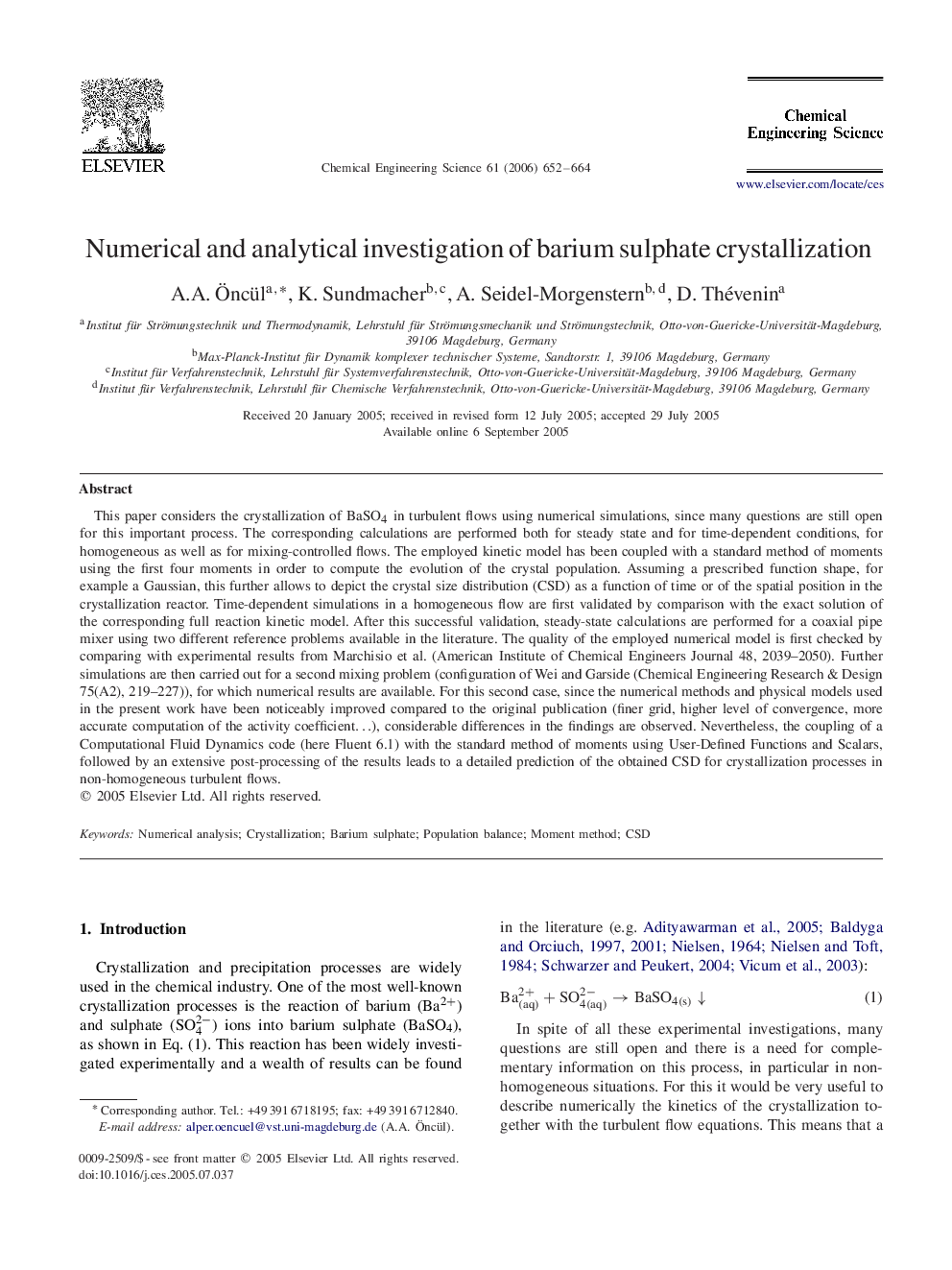| کد مقاله | کد نشریه | سال انتشار | مقاله انگلیسی | نسخه تمام متن |
|---|---|---|---|---|
| 160062 | 457059 | 2006 | 13 صفحه PDF | دانلود رایگان |

This paper considers the crystallization of BaSO4BaSO4 in turbulent flows using numerical simulations, since many questions are still open for this important process. The corresponding calculations are performed both for steady state and for time-dependent conditions, for homogeneous as well as for mixing-controlled flows. The employed kinetic model has been coupled with a standard method of moments using the first four moments in order to compute the evolution of the crystal population. Assuming a prescribed function shape, for example a Gaussian, this further allows to depict the crystal size distribution (CSD) as a function of time or of the spatial position in the crystallization reactor. Time-dependent simulations in a homogeneous flow are first validated by comparison with the exact solution of the corresponding full reaction kinetic model. After this successful validation, steady-state calculations are performed for a coaxial pipe mixer using two different reference problems available in the literature. The quality of the employed numerical model is first checked by comparing with experimental results from Marchisio et al. (American Institute of Chemical Engineers Journal 48, 2039–2050). Further simulations are then carried out for a second mixing problem (configuration of Wei and Garside (Chemical Engineering Research & Design 75(A2), 219–227)), for which numerical results are available. For this second case, since the numerical methods and physical models used in the present work have been noticeably improved compared to the original publication (finer grid, higher level of convergence, more accurate computation of the activity coefficient……), considerable differences in the findings are observed. Nevertheless, the coupling of a Computational Fluid Dynamics code (here Fluent 6.1) with the standard method of moments using User-Defined Functions and Scalars, followed by an extensive post-processing of the results leads to a detailed prediction of the obtained CSD for crystallization processes in non-homogeneous turbulent flows.
Journal: Chemical Engineering Science - Volume 61, Issue 2, January 2006, Pages 652–664